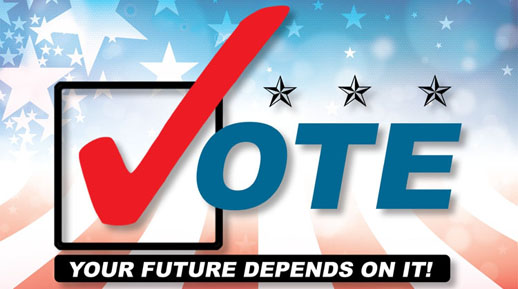
Today VanRamblings will forego our usual partisanship, and simply urge you to get out to vote today (that is, if you were not one of the 3.6 million Canadians who voted at the advance polls), to exercise your hard fought for democratic franchise, and vote for the political party and candidate of your choice, be they Tory, NDP, Liberal, Green, Independent, or “other”.
Lineups at your polling station are likely to be longer than you experienced in the past, the wait even longer, given the provisions of Canada’s new Fair Election Act, given Royal Assent on June 19th, 2014, which eliminates the use of vouching — the practice of allowing a voter with proper identification to vouch for the identity of another individual who lives in the same polling area — and Voter Information Cards as a form of ID, now requiring picture ID from you with your address, as well as your Voter Information Card.
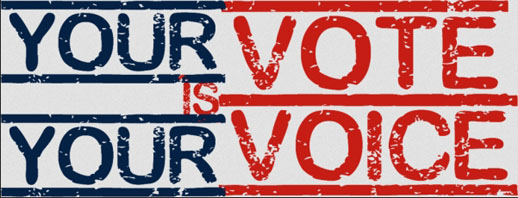
In addition, poll clerks are no longer allowed to simply check your name off a voters list, as was previously the case, but must now hand-write your name into an election book, which you must sign, a process that will likely serve to dramatically slow the voting process at your local polling station.
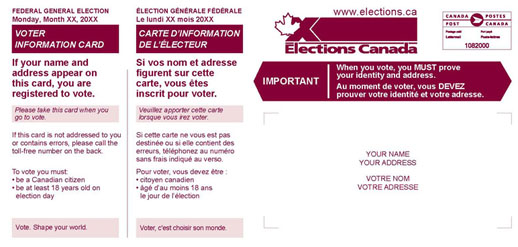
To vote, you must be registered. However, if you’re not registered, you can register at your polling place, just before you vote.
What To Do If You’re Not Registered at Your Local Polling Station
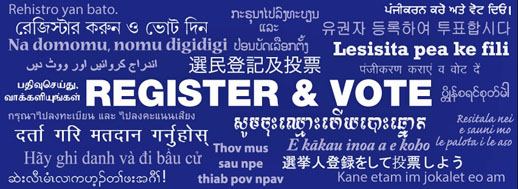
Have you moved recently? Got a new address? To have your name added to the list of electors at your polling station, you must fill in a Registration Certificate with the registration officer or poll clerk. Once the Registration Certificate is authorized by the deputy returning officer, and you show satisfactory proof of your identity and address, you can then vote.
You may also fill out and print your Registration Certificate at home.
To find the address and location of your local polling station, where you may take in your completed Registration Certificate, click here.
Click here for a list of Elections Canada approved identification, and the three options you have to prove your identity and address.
Note: One representative of each candidate in the electoral district is legally entitled to be present to observe the process at a Registration Desk; or two representatives per candidate to observe the process at a polling station.
Again: when you vote, you must prove your identity and address.
You have three options:
- Show one original piece of identification issued by a Canadian government, whether federal, provincial or local, or an agency of that government, that contains your photo, name and address (for example, a driver’s license), or
- Show two pieces of identification from a list authorized by the Chief Electoral Officer of Canada. Both must have your name and at least one must have your address (such as a health card and hydro bill), or
- If you have two pieces of identification but can’t prove where you live, you may have your residence attested to by another elector who knows you, who lives in the same polling division as you, and is on the list of electors or is registering to vote (for example, a neighbour or your roommate who has proof of identification and address). In this case, you must both take a written oath.
Note: Pieces of identification must be in either English or French. Expired documents are accepted. Your passport, with picture, is adequate identification.
Polling hours have also changed across Canada, as per the graphic below.
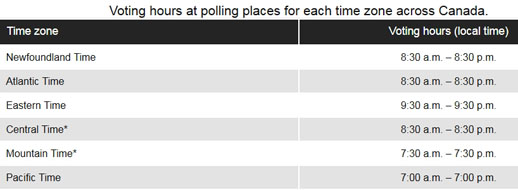
With the new, staggered polling hours across Canada, for the first time in a Canadian election, we’re not likely to know the outcome of the election until the wee hours of the morning following voting day. As above, polls close in Ontario at 9:30pm Eastern Time, or 6:30pm Pacific Time. We’re not likely to know how Canadians in eastern Canada voted until near midnight eastern time, and 9pm pacific time, keeping us glued to our TVs til late.
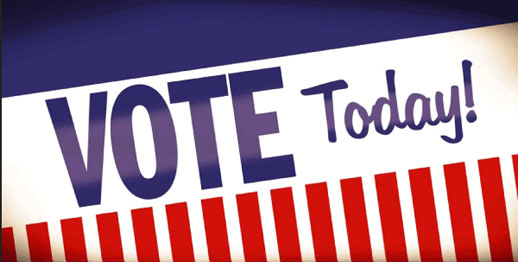
Note should be made that in British Columbia, polling stations will close at 7pm, a full hour earlier than has usually been the case in the past; voters lined up at the polls before 7pm will be allowed to vote past the 7pm deadline — but given the changes to the voting procedures in 2015, getting to your polling station early will better serve your interests.
In the 2015 election, there are 66,000 ballot boxes that will be distributed to 20,000 polling locations, with a polling station staff of 250,000 polling clerks retained for the election, at a cost of $375 million, based on the longest-in-a-century 78-day campaign, a cost that could actually go higher.
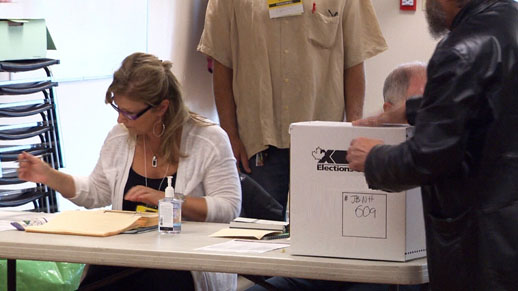
Today’s the day when you elect a new government to a probable four-year term in power. Today, then, Oct. 19, 2015 is the day to get your vote on!